Related Research Articles

The Kalmar Union was a personal union in Scandinavia, agreed at Kalmar in Sweden as designed by widowed Queen Margaret of Norway and Sweden. From 1397 to 1523, it joined under a single monarch the three kingdoms of Denmark, Sweden, and Norway, together with Norway's overseas colonies.
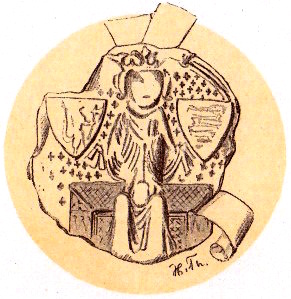
Olaf II of Denmark was King of Denmark as Olaf II from 1376 and King of Norway as Olav IV from 1380 until his death. Olaf was the son of Queen Margaret I of Denmark and King Haakon VI of Norway, and grandson of kings Magnus IV of Sweden and Valdemar IV of Denmark.

Haakon IV Haakonsson, sometimes called Haakon the Old in contrast to his namesake son, was King of Norway from 1217 to 1263. His reign lasted for 46 years, longer than any Norwegian king since Harald Fairhair. Haakon was born into the troubled civil war era in Norway, but his reign eventually managed to put an end to the internal conflicts. At the start of his reign, during his minority, Earl Skule Bårdsson served as regent. As a king of the Birkebeiner faction, Haakon defeated the uprising of the final Bagler royal pretender, Sigurd Ribbung, in 1227. He put a definitive end to the civil war era when he had Skule Bårdsson killed in 1240, a year after he had himself proclaimed king in opposition to Haakon. Haakon thereafter formally appointed his own son as his co-regent.
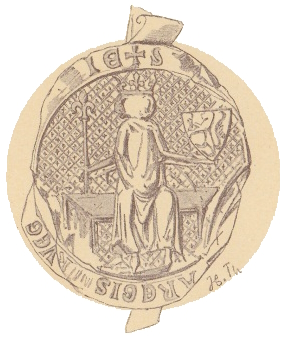
Haakon VI, also known as Håkan Magnusson, was King of Norway from 1343 until his death and King of Sweden between 1362 and 1364. He is sometimes known as Haakon Magnusson the Younger to distinguish him from his great-grandfather, Haakon V.
Sweden has for political and dynastic reasons been in union with other kingdoms and princely states, ostensibly personal unions.

The Treaty of Kiel or Peace of Kiel was concluded between the United Kingdom of Great Britain and Ireland and the Kingdom of Sweden on one side and the Kingdoms of Denmark and Norway on the other side on 14 January 1814 in Kiel. It ended the hostilities between the parties in the ongoing Napoleonic Wars, where the United Kingdom and Sweden were part of the anti-French camp while Denmark–Norway was allied to France.
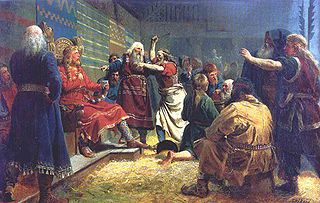
Haakon, also spelled Håkon, Hakon, Håkan, or Háukon or Hákon, is an older spelling of the modern Norwegian form of the Old Norwegian masculine first name Hákon meaning "High Son" from há and konr. An old English form is Hacon as in Haconby, Hacon's Village. The name appears in Scottish Gaelic as Àcainn, as seen in the place-name Kyleakin, meaning 'Haakon's Narrows', being named after King Haakon IV of Norway.

Tønsberg Fortress was a medieval fortress and castle, located in Tønsberg, Norway which was defended by the fortress for over 300 years.
The Kingdom of Norway as a unified realm dates to the reign of King Harald I Fairhair in the 9th century. His efforts in unifying the petty kingdoms of Norway resulted in the first known Norwegian central government. The country, however, soon fragmented and was collected into one entity in the first half of the 11th century, and Norway has retained a monarchy since that time. Traditionally, it has been viewed as being ruled by the Fairhair dynasty, though modern scholars question whether the eleventh century kings and their successors were truly descendants of Harald.
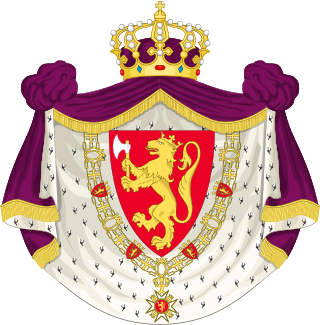
The Norwegian monarch is the head of state of Norway, which is a constitutional and hereditary monarchy with a parliamentary system. The Norwegian monarchy can trace its line back to the reign of Harald Fairhair and the previous petty kingdoms which were united to form Norway; it has been in unions with both Sweden and Denmark for long periods.

Haakon Haakonsson the Young was the son of king Haakon Haakonsson of Norway, and held the title of king, subordinate to his father, from 1 April 1240 to his death. He was referred to as Haakon the Young to distinguish him from his father, who was sometimes correspondingly called Haakon the Old.
Events in the year 1814 in Norway.

Denmark–Norway is a term for the 16th-to-19th-century multi-national and multi-lingual real union consisting of the Kingdom of Denmark, the Kingdom of Norway, the Duchy of Schleswig, and the Duchy of Holstein. The state also claimed sovereignty over three historical peoples: Frisians, Gutes and Wends. Denmark–Norway had several colonies, namely the Danish Gold Coast, the Nicobar Islands, Serampore, Tharangambadi, and the Danish West Indies. The union was also known as the Dano-Norwegian Realm, Twin Realms (Tvillingerigerne) or the Oldenburg Monarchy (Oldenburg-monarkiet).
Events from the year 1814 in Denmark.

Greenlandic independence is a political ambition of some political parties, advocacy groups, and individuals of Greenland, an autonomous territory within the Kingdom of Denmark, to become an independent sovereign state.
Events in the year 1261 in Norway.
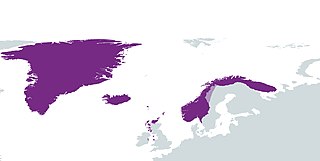
The term Norwegian Realm and Old Kingdom of Norway refer to the Kingdom of Norway's peak of power at the 13th century after a long period of civil war before 1240. The kingdom was a loosely unified nation including the territory of modern-day Norway, modern-day Swedish territory of Jämtland, Herjedalen, Ranrike (Bohuslän) and Idre and Särna, as well as Norway's overseas possessions which had been settled by Norwegian seafarers for centuries before being annexed or incorporated into the kingdom as 'tax territories'. To the North, Norway also bordered extensive tax territories on the mainland. Norway, whose expansionism starts from the very foundation of the Kingdom in 872, reached the peak of its power in the years between 1240 and 1319.
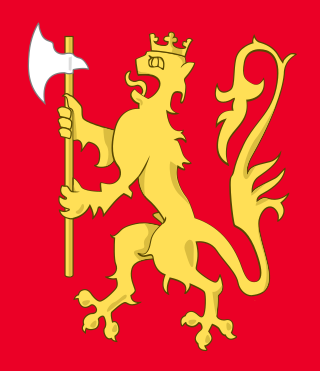
The First Swedish–Norwegian union, was a personal union of the separate kingdoms of Sweden and Norway together with Norway's overseas colonies .The union was founded by King Magnus IV of Sweden in 1319 and dissolved in 1355, briefly re-uniting in 1362 until 1365.
